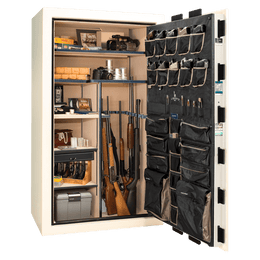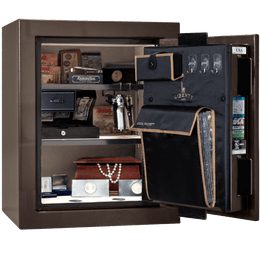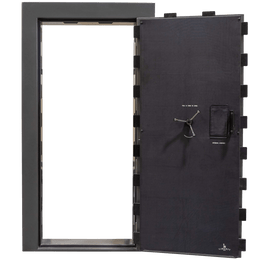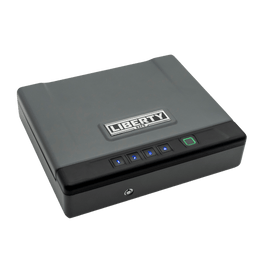Creating a Fortress for Your Most Prized Possessions
Every home contains items that are irreplaceable, not just in monetary value but in sentimental worth. From family heirlooms and important documents to firearms and jewelry, the desire to keep these items secure is universal. True peace of mind comes from knowing your valuables are protected against unforeseen events. A comprehensive security strategy involves more than just a lock on the door; it's about creating layers of protection, with a high-quality home safe as the anchor. This guide provides a clear path to safeguarding what matters most to you.
Identifying What Needs Protection
The first step in securing your assets is to take stock of what you need to protect. Valuables come in many forms, and recognizing them is crucial for choosing the right security solution. Consider organizing your inventory into categories:
- Important Documents: Passports, birth certificates, social security cards, property titles, insurance policies, and wills. Losing these can lead to significant logistical challenges.
- Firearms: Responsible ownership includes securing firearms to prevent unauthorized access. A robust gun safe is not just a recommendation; it's a necessity for any firearm owner.
- Jewelry and Heirlooms: Items with high monetary and sentimental value, such as watches, rings, and inherited keepsakes, are prime targets for theft.
- Cash and Collectibles: Emergency cash, rare coins, stamps, and other valuable collections should be stored securely.
- Digital Media: External hard drives, USB drives, and laptops containing sensitive personal or business data require protection from both theft and fire.
Once you have a clear inventory, you can better assess the size and type of safe that will meet your needs, from a compact closet safe for documents to a large-capacity model for extensive collections.
Understanding the Primary Threats
Your valuables face two main adversaries: theft and fire. A quality safe is engineered to defend against both, but understanding these threats helps in selecting the right features.
Defense Against Theft
Most burglars want to get in and out quickly. A heavy, well-built safe that is properly installed is a significant deterrent. Key security features include thick steel construction (measured in gauge, where a lower number means thicker steel), multiple solid-steel locking bars, and a reliable lock. A safe like the Classic Plus, with its 10-gauge steel body, provides formidable resistance.
Defense Against Fire
A house fire can reach devastating temperatures in minutes. A safe's fire rating indicates how long its internal temperature will remain below a certain point (typically 350°F, the temperature at which paper chars) when exposed to extreme heat. This fire protection you can trust is achieved through multiple layers of fireboard insulation. Look for safes with certified fire ratings of at least 60 minutes for meaningful protection.
Did You Know?
- The majority of home burglaries are over in less than 10 minutes. Thieves prioritize easy-to-grab items, making a difficult-to-breach safe one of your best defenses.
- A typical house fire can reach temperatures of 1,100°F at ceiling level. A safe's ability to withstand this heat is critical for protecting sensitive documents and media.
- An unbolted safe can be removed from the premises and opened elsewhere at a thief's leisure. Proper installation is as important as the safe's construction itself.
How to Maximize Your Safe's Effectiveness
Owning a safe is the first step. Using it wisely ensures you get the maximum protection it offers. Follow these tips for proper use and care.
1. Choose a Strategic Location
The best location for your safe is one that is both convenient for you to access and concealed from casual visitors. A closet, home office, or a bolted-down location in the basement are excellent choices. Avoid placing it in plain sight. For guidance on proper placement, refer to our resources on gun safe use and care.
2. Organize the Interior for Easy Access
An organized safe makes it easier to find what you need quickly. Utilize door panels, shelving, and drawers. Proper organization also prevents damage to delicate items. Illuminate the space with a motion-sensing gun safe LED light kit to see everything clearly, day or night.
3. Perform Regular Maintenance
Your safe is a long-term investment that requires minimal but important upkeep. For electronic locks, change the batteries annually to ensure reliable access. Periodically check that the safe is still securely bolted to the floor. If you have a SecuRam lock, tutorials on how to change the battery are readily available.
The American Standard of Quality
When it comes to protecting your family and valuables, the quality of your safe's construction is paramount. Safes manufactured in the United States are built to a higher standard of quality control and material integrity. Choosing an American-made safe means investing in superior craftsmanship, supporting domestic jobs, and ensuring that the steel protecting your most important possessions is of the highest grade. At Liberty Safe, we take immense pride in being America's #1 manufacturer, building each safe with a commitment to reliability and strength that you can count on for a lifetime.
Ready to Secure Your Peace of Mind?
Investing in a high-quality safe is one of the most important decisions you can make for your home and family. If you have questions or need help selecting the perfect safe for your needs, our team is here to help.
Contact Our Experts TodayFrequently Asked Questions
What size safe do I need?
Consider your current needs and plan for the future. It's wise to buy a safe that is slightly larger than you think you need, as collections of valuables tend to grow over time. Inventory your items first to get a baseline.
What does a safe's fire rating mean?
The fire rating indicates the duration (e.g., 60, 90, 120 minutes) a safe can withstand a specific fire temperature (e.g., 1200°F) while keeping the internal temperature below 350°F, which is the point where paper and documents begin to scorch.
Should I choose an electronic or mechanical lock?
This comes down to personal preference. Electronic locks offer quick, easy access and can be reprogrammed easily. Mechanical dial locks are highly reliable and do not require batteries, but can be slower to open.
How important is it to bolt down my safe?
It is critically important. Most safes, especially those under 750 lbs, can be carried away by determined thieves. Bolting your safe securely to a concrete or wood floor makes it a permanent fixture of your home and drastically increases its security.
Glossary of Terms
Steel Gauge
A measurement of steel thickness. In the context of safes, a lower gauge number indicates thicker, stronger steel. For example, 10-gauge steel is thicker and more pry-resistant than 14-gauge steel.
Locking Bars
Solid steel bolts that extend from the safe door into the safe's body when locked. More and thicker bars provide greater protection against pry attacks.
Relocker
A security device within the locking mechanism. If the lock is tampered with or attacked, the relocker triggers, permanently locking the bolts in place and preventing the safe from being opened.
Fireboard
A specialized gypsum board used to insulate a safe's interior. When exposed to heat, it releases water vapor, which helps keep the internal temperature of the safe low during a fire.







